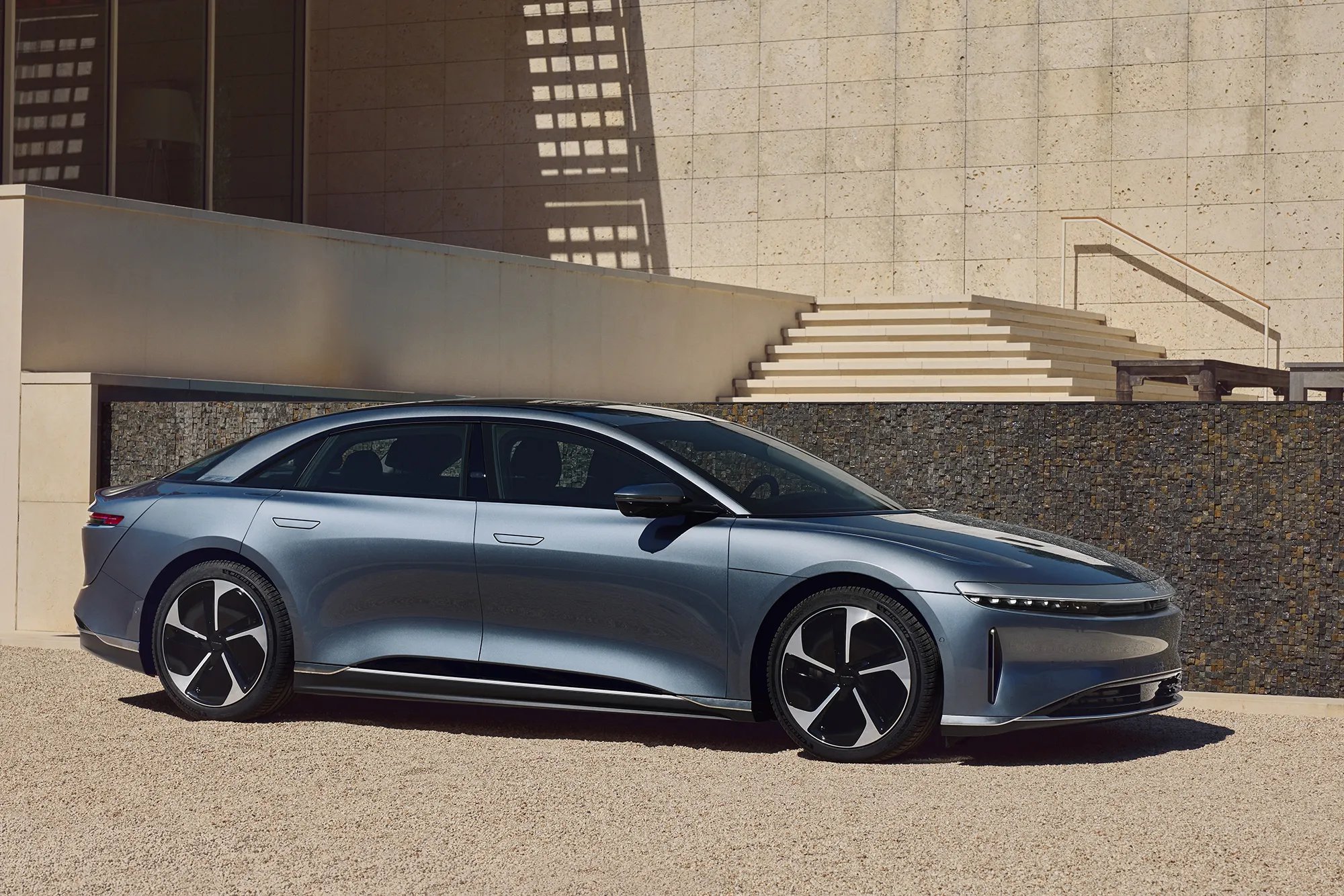Archer Aviation might have a brighter future than the struggling luxury EV maker.
Lucid (LCID -2.17%), a producer of luxury electric vehicles, attracted a lot of attention when it went public by merging with a special purpose acquisition company (SPAC) four years ago. That’s mainly because it was led by Tesla‘s (NASDAQ: TSLA) former chief engineer Peter Rawlinson, and it had already started delivering its first Air sedans.
Yet, like many other SPAC-backed start-ups, Lucid overpromised and underdelivered. It originally set out to deliver 20,000 vehicles in 2022, 49,000 vehicles in 2023, and 90,000 vehicles in 2024. But in reality, its annual deliveries only reached 4,369 in 2022, 6,001 in 2023, and 10,241 in 2024.
Image source: Lucid.
Lucid blamed that slower-than-expected growth on its supply chain constraints, intense competition, a challenging macro environment, and the delayed launch of its Gravity SUV. Peter Rawlinson also resigned from the CEO position this February, and the board still hasn’t appointed his permanent successor yet.
From 2022 to 2024, Lucid’s revenue grew at a CAGR of 15% from $608 million to $808 million. However, its net loss widened from $2.56 billion to $3.06 billion. Its stock has declined nearly 90% since its first post-merger trade, but it still has a market cap of $8.6 billion — or 11 times last year’s sales. That high price-to-sales ratio suggests that some investors are hopeful that its Saudi Arabian investors (who own nearly two-thirds of its shares) can help it achieve its goal of more than doubling its production to 20,000 vehicles this year. That’s why analysts expect its revenue to surge 71% to $1.38 billion this year as it narrows its net loss of $2.9 billion.
I don’t have much faith in those estimates, though. Lucid repeatedly missed its own expectations, struggled to scale up its business, and continues to dilute its shares as it racks up steep losses. So, instead of betting on Lucid’s Hail Mary turnaround, investors should focus on a less valuable EV stock that might just grow faster and surpass its market cap within the next year: the electric vertical takeoff and landing (eVTOL) aircraft maker Archer Aviation (ACHR 2.05%), which currently has a market cap of $8.43 billion.
Why could Archer Aviation have a brighter future than Lucid?
Archer’s Midnight eVTOL aircraft can carry a single pilot and four passengers, travel up to 100 miles without recharging, and reach a maximum speed of 150 miles per hour. Compared to helicopters, they’re quieter, greener, and easier to land in crowded urban areas. Those advantages make them well-suited for short-range taxi services.
Archer hasn’t generated any meaningful revenue yet, but it ended its latest quarter with a massive backlog of approximately $6 billion. That backlog includes big orders from United Airlines, Future Flight Global, Soracle (a joint venture between Japan Airlines and the Japanese conglomerate Sumitomo), Ethiopian Airlines, Abu Dhabi Aviation, Stellantis, and the U.S. Air Force.
Archer plans to start its first air taxi flights in Abu Dhabi later this year. In the U.S., it’s waiting for the Federal Aviation Administration’s (FAA) final approval for its commercial flights to start up its air taxi services. To support that expansion, it aims to produce 10 aircraft in 2025, 48 aircraft in 2026, 252 aircraft in 2027, and 650 aircraft in 2028.
It also plans to launch its own first-party air taxi service within the next two years. If it achieves those goals, analysts expect its annual revenue to rise from $13 million in 2025 to $437 million in 2027. Archer’s roadmap sounds ambitious, but its growing backlog could support those plans, and its nascent market is expanding. From 2024 to 2030, Markets and Markets expects the global eVTOL aircraft market to grow at a CAGR of 35.3% as they displace traditional helicopters.
Archer has two strengths that Lucid lacks: an early mover’s advantage in a nascent market, and a lot of pent-up demand for its products. Lucid entered the EV market long after Tesla and other EV makers saturated the market, and it quietly stopped disclosing the size of its reservation backlog (which had been shrinking) at the start of 2023.
With a market cap of $7.5 billion, Archer doesn’t look cheap at 17 times its projected sales for 2027. By comparison, Lucid trades at less than two times its estimated sales for 2027. But if Lucid fails to ramp up its production this year, its stock could easily be cut in half.
Why could Archer become more valuable than Lucid?
Archer still trades at a steep discount to its biggest rival, Joby Aviation (JOBY 3.40%), which trades at a whopping 70 times its projected sales for 2027. If Archer launches its commercial air taxi flights in the U.A.E. and gains the FAA’s approval for its planned flights in the U.S., it might command a much higher valuation within the next 12 months.
If Archer achieves those goals and its stock trades at 30 times its estimated sales for 2027 by then, its market cap would swell to $13.1 billion and eclipse Lucid’s current market cap. As for Lucid, it could struggle to maintain its current market cap if it keeps disappointing its investors.


